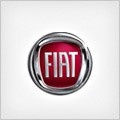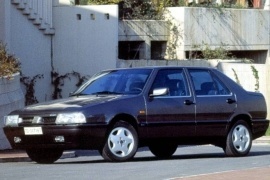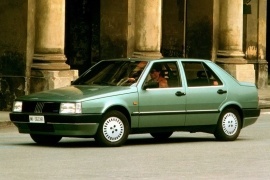
FIAT Croma
Generations Timeline, Specs and Pictures

Fiat didn’t have to dig too deep to find a name for its 2005 family car.
It just had to go to two decades and find a decent family vehicle: the Croma.
The 2005 model was a completely different vehicle. While the original version was built together with Saab, and it was a hatchback, its successor was more of a minivan. Worth mentioning that in 2005 the European MPV market was not so crowded anymore, and the customers were already turning their heads toward SUVs and crossovers. Moreover, Croma came in a bad moment and, when the world financial crisis started in 2008, the effects were terrible for the Italian brand.
Fiat didn’t build the Croma from scratch. It used the same GM Epsilon platform from the Opel/Vauxhall Vectra, Cadillac BLS, and Saab 9-3. Giorgetto Giugiaro signed the design, and it was supposed to be a family vehicle.
Its rounded shapes, with angular headlights, were far from any aggressive design. The vehicle was somehow between a station wagon and a minivan. That said, it offered a high roofline with big windows area around the cabin. A third side window behind the C-pillars enhanced the cabin’s interior light. In the rear, the big horizontal taillights enhanced the car’s visibility from behind.
Thanks to its high greenhouse, the designer could install a higher seating position. Fiat didn’t try to accommodate seven passengers inside. Instead, it offered five seats with plenty of legroom and headroom. Fiat installed its new UConnect infotainment system on the center stack, which was able to play music from smartphones.
Under the hood, the carmaker offered a choice of five engines. While most of them were paired to a manual gearbox, the 5-cylinder, 2.4-liter turbodiesel was available with a new, six-speed automatic.

The second facelift of the Fiat Croma was introduced in 1991.
The car wasn’t that young anymore since it had been launched in 1985, but the base platform was very good. It was the same platform used for larger cars such as the Lancia Thema, Alfa Romeo 164 or the Saab 9000. All four carmakers joined forces to invest in a new, FWD platform, to replace their RWD models. Previously, Fiat had had the RWD Argenta model and it needed a change.
In 1988, along with the first facelift, the Croma received the first direct-injected diesel for a passenger vehicle. The gasoline engines were also very advanced for that time, especially the CHT versions, which had a pre-chamber where air and fuel were mixed before entering the cylinders.
The transmissions offered were either a 5-speed manual, fitted as standard on all models, or a 4-speed automatic, on selected engines only. In Europe, in the ’90s, the demand for automatic transmissions was very low. Thus, investing in a better automatic gearbox didn’t make any sense.
The top version had an Alfa Romeo V6 engine. It was a 2.5-liter and offered 162 hp. This engine was very close in performance with the 2.0-liters turbo with 150 hp. The naturally aspirated 2.0-liter engine had 136 hp. The Croma was withdrawn from the production line in 1996 and Fiat decided to not make a replacement for it.

The second facelift of the Fiat Croma was introduced in 1991.
The car wasn’t that young anymore since it had been launched in 1985, but the base platform was very good. It was the same platform used for larger cars such as the Lancia Thema, Alfa Romeo 164 or the Saab 9000. All four carmakers joined forces to invest in a new, FWD platform, to replace their RWD models. Previously, Fiat had had the RWD Argenta model and it needed a change.
In 1988, along with the first facelift, the Croma received the first direct-injected diesel for a passenger vehicle. The gasoline engines were also very advanced for that time, especially the CHT versions, which had a pre-chamber where air and fuel were mixed before entering the cylinders.
The transmissions offered were either a 5-speed manual, fitted as standard on all models, or a 4-speed automatic, on selected engines only. In Europe, in the ’90s, the demand for automatic transmissions was very low. Thus, investing in a better automatic gearbox didn’t make any sense.
The top version had an Alfa Romeo V6 engine. It was a 2.5-liter and offered 162 hp. This engine was very close in performance with the 2.0-liters turbo with 150 hp. The naturally aspirated 2.0-liter engine had 136 hp. The Croma was withdrawn from the production line in 1996 and Fiat decided to not make a replacement for it.























































